This post and sample letter details how to document your disability and how to share the information with your employer to provide an accommodation. It includes helpful information about an employee’s rights and a sample letter of inquiry to an employer. Employees and the advocates who support them may find this tool useful when interfacing with an employer about needed accommodations.
This guide includes information about the legal basics of the Americans with Disabilities Act and how to request and negotiate an accommodation. Each section responds to commonly asked questions about the policies and practicalities of getting an accommodation at work, including if you have to disclose your disability to your employer and what accommodations you can request. This tool could be helpful for an individual employee, a practitioner informing clients of their rights, or an employer seeking to strengthen accommodations.
This six-step guide can help employers assess their employees’ financial stability and make an actionable plan to strengthen financial wellness. The foundational step includes assessing employee wages and benefits to ensure workers are earning a livable wage. The following steps guide employers through various financial wellness solutions, including how to implement and evaluate strategies and solicit feedback. This guide is written for employers, but it could also be used by workforce development professionals or worker advocates who work closely with employers.
This guide is designed to help support employers to implement an income advance program for employees in partnership with a financial institution. These programs provide small, same-day emergency loans to help workers weather financial emergencies and reduce stress. The tool includes an online resource library and a virtual peer group for information and support. This tool can be used by employers and the practitioners who advise them.
Workforce development practitioners can use this guide to build capacity to strengthen relationships with employers. Turn to page 8 for instructions on finding and using local labor market information to help jobseekers make educated job decisions and to inform employer engagement, and relevant programming. While the guide is designed for workforce professionals in the Chicago area, many of the listed resources are national or have equivalents in other regions.
The San Diego Workforce Partnership developed this list of seven actionable steps workforce development practitioners can take to assess and improve job quality. Strategies relate to spending, employer engagement, partnerships, building worker power, and measuring success. The Workforce Partnership also provides a job quality framework and a list of job quality indicators. Although designed for workforce practitioners, this tool can also be informative for others interested in strategies to improve job quality, including policymakers and economic development professionals.
This framework can help employers and their partners define job quality and design high-quality job opportunities in collaboration with workers, based on a menu of components of a quality job. The tool is built around three pillars that can help to attract and retain talent: foundational elements of a quality job such as wages and benefits, support elements such as training, and opportunity elements such as recognition.
MIT’s Good Jobs Institute created this framework to help employers seeking to improve worker experience, retention, and productivity to assess their performance across nine “essential elements” of a quality job. These include meeting an employee’s basic needs, such as through fair wages and a flexible schedule, and meeting “higher needs” such as personal growth, belonging, and recognition. While designed for employers, the framework has relevance for all practitioners seeking to define and assess job quality in an organization.
This tool provides step-by-step guidance for economic and workforce development agencies to think through implementing an employee ownership strategy. It details the different forms of employee ownership, linking out to resources that allow readers to deepen their understanding. It also contains a repository of resources and case studies for interventions to support employee ownership that economic and workforce development agencies are uniquely positioned to make.
This guide can help managers and employee-owners at cooperatives, employee stock ownership plans (ESOPs), and firms seeking to improve democratic practices. Users may focus on specific topics within the guide, or they may follow it from beginning to end. It is divided into themes, with each section including activities, meeting tips, an assessment, checkpoints, and case studies.
